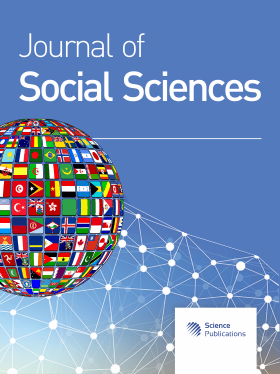Silk-Cloth Weaving Development of the Mon-Khmer Ethnic Group in Lower-Isan
Abstract
Problem statement: Silk cloth weaving culture of the Mon-Khmer ethnic group in Lower-Isan has a specific identity which should be handed down to future generation. The purposes of this research were to examine: (1) the body knowledge concerning silk clothes of the Mon-Khmer ethnic group in Lower-Isan region, (2) the process of production or silk-cloth weaving of the Mon-Khmer ethnic group in Lower-Isan region and (3) development of silk-cloth weaving of the Mon-Khmer ethnic group in Lower-Isan region. Approach: The research data was gathered from documents concerned and research fields. A sample was 156 people living at 7 villages and those involving silk-cloth production or weaving. The data was analyzed according to the research purposes and presented by means of a descriptive analysis. Results: Silk-cloth weaving has been a cultural heritage transferred from ancestors. In 1215 Chow Tang Kwan stated that the Siamese people came there, grew mulberries, raised silkworms and wove silk clothes from that time through learning from generation to generation. The cloth-identity and patterns have been party influenced by their ethnic group together with the way of life in each period. In the past, the main purpose of silk-cloth weaving was for household use. Some of the silk clothes were kept for being supplement to various rituals and Buddhist ceremonies. Thus, it was not necessary for them to have commercial production. Household-labor was still an important-productive factor of sufficient economy and reliant society. For the production process, it has been found that at present the economic and social structures have changed from household-use production to commercial production. There are complete production processes in the type of forming groups and the management system by increasing production competency to obtain both quantity and quality as well as standard prices. There are transmutations into a variety of other products and promotion of domestic and foreign marketing. However, what is firmly retained to the community is the traditional silk-cloth weaving. For silk-cloth weaving development, it shows that the appropriate model of silk-cloth weaving development of the Mon-Khmer ethnic group in Lower-Isan region consists of economic and social changes which can affect silk-cloth weaving culture of the Mon-Khmer ethnic group in Lower-Isan region. Conclusion/Recommendations: Silk-cloth weaving is a very important cultural heritage of Mon-Khmer ethnic group. It accumulated and adhered from ancestors and transacting through social recognition in each period. All of production processes of each period are scrupulous such as growing mulberries, raising silkworms, producing fibers and dyeing fibers. The development of identity, patterns, weaving technique, production equipment, transmutation equipment and marketing cause a sequence of changes and development of the process of silk-cloth production or weaving from weaving for household use to commercial production. At present, there are many forming groups which produce for a commercial purpose. However, what is firmly retained to the community is the traditional of silk-cloth weaving by hand-loom.
DOI: https://doi.org/10.3844/jssp.2010.1.3

- 6,965 Views
- 4,264 Downloads
- 1 Citations
Download
Keywords
- Silk-cloth weaving
- development
- Mon-Khmer ethnic group
- lower-Isan
